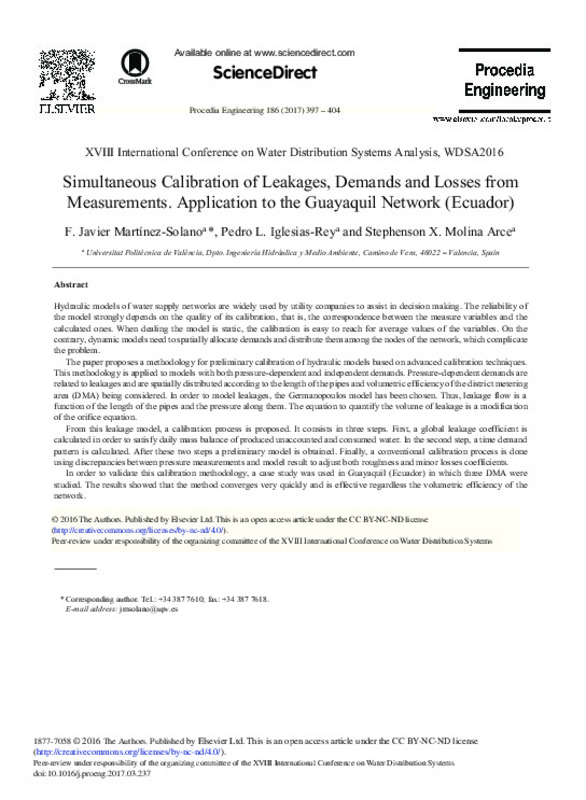JavaScript is disabled for your browser. Some features of this site may not work without it.
Buscar en RiuNet
Listar
Mi cuenta
Estadísticas
Ayuda RiuNet
Admin. UPV
Simultaneous Calibration of Leakages, Demands and Losses from Measurements. Application to the Guayaquil Network (Ecuador)
Mostrar el registro completo del ítem
Por favor, use este identificador para citar o enlazar este ítem: http://hdl.handle.net/10251/100719
Ficheros en el ítem
Metadatos del ítem
| Título: | Simultaneous Calibration of Leakages, Demands and Losses from Measurements. Application to the Guayaquil Network (Ecuador) | |
| Autor: | Molina-Arce, Stephenson Xavier | |
| Entidad UPV: |
|
|
| Fecha difusión: |
|
|
| Resumen: |
[EN] Hydraulic models of water supply networks are widely used by utility companies to assist in decision making. The reliability of
the model strongly depends on the quality of its calibration, that is, the correspondence ...[+]
|
|
| Palabras clave: |
|
|
| Derechos de uso: | Reconocimiento - No comercial - Sin obra derivada (by-nc-nd) | |
| Fuente: |
|
|
| DOI: |
|
|
| Editorial: |
|
|
| Versión del editor: | https://doi.org/10.1016/j.proeng.2017.03.237 | |
| Título del congreso: |
|
|
| Lugar del congreso: |
|
|
| Fecha congreso: |
|
|
| Tipo: |
|









